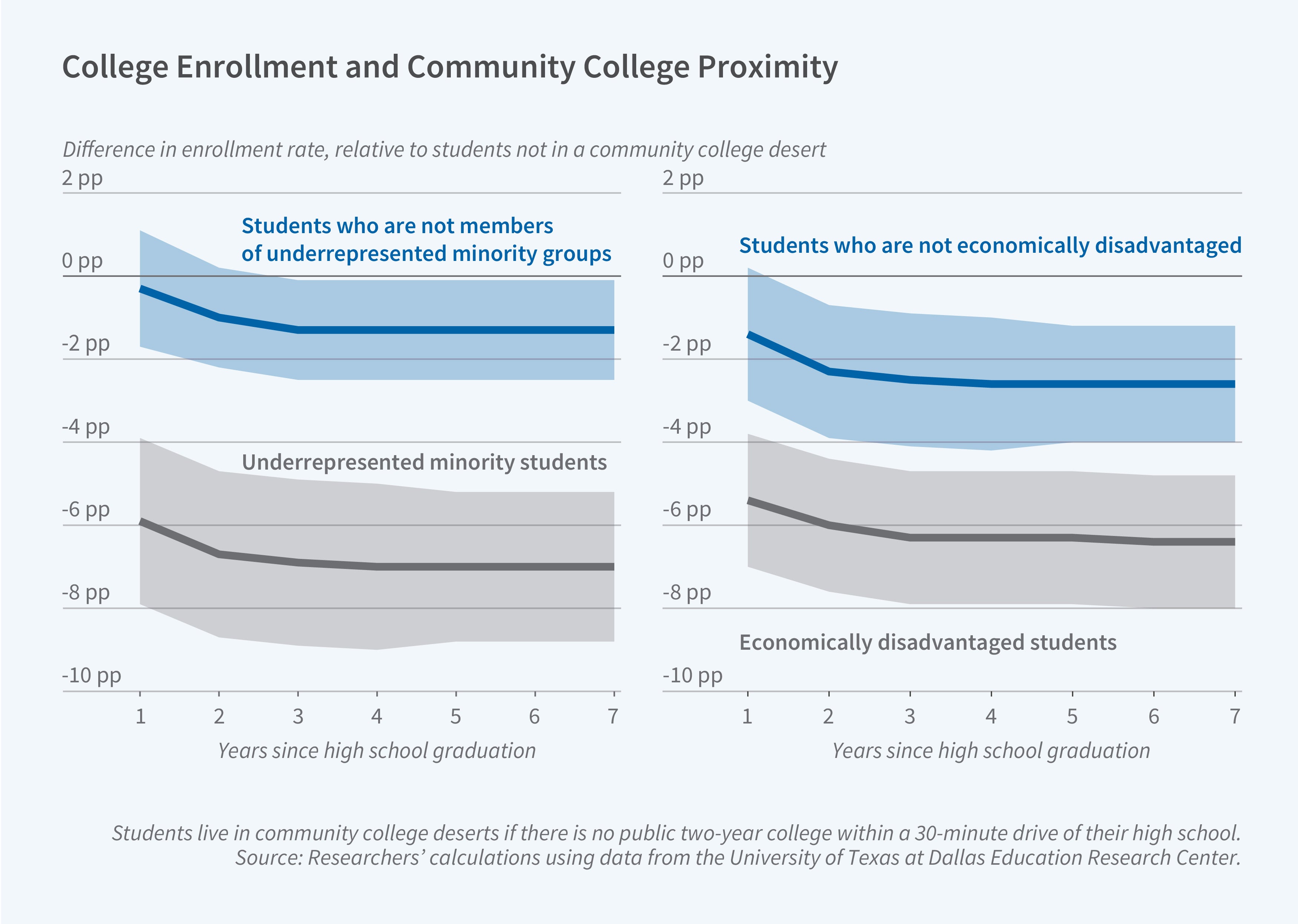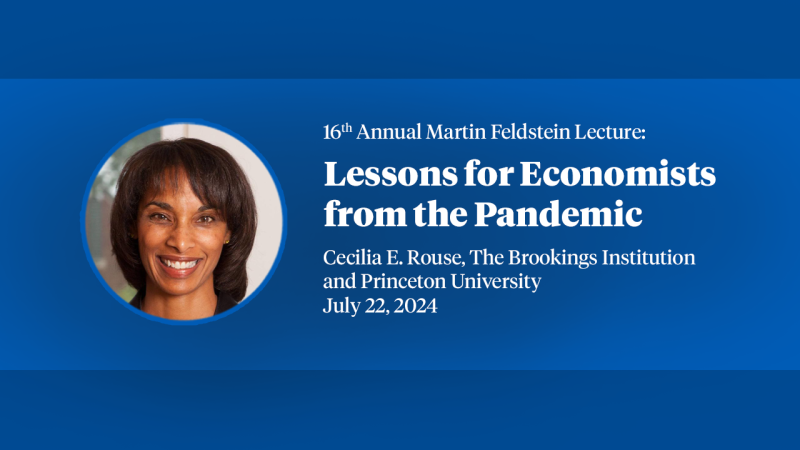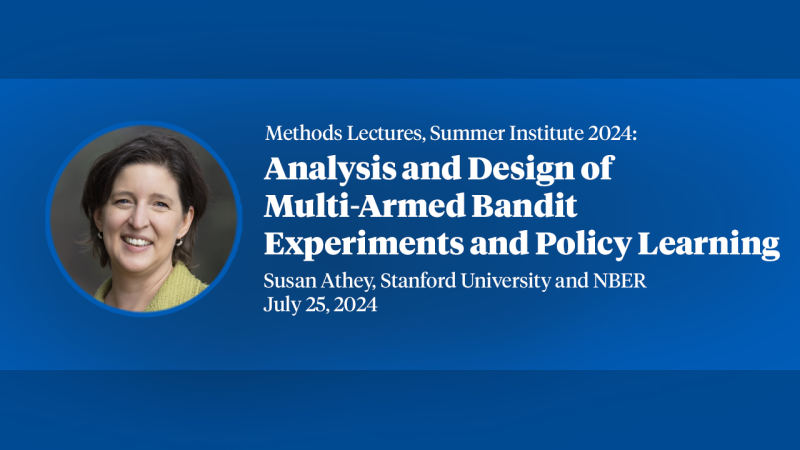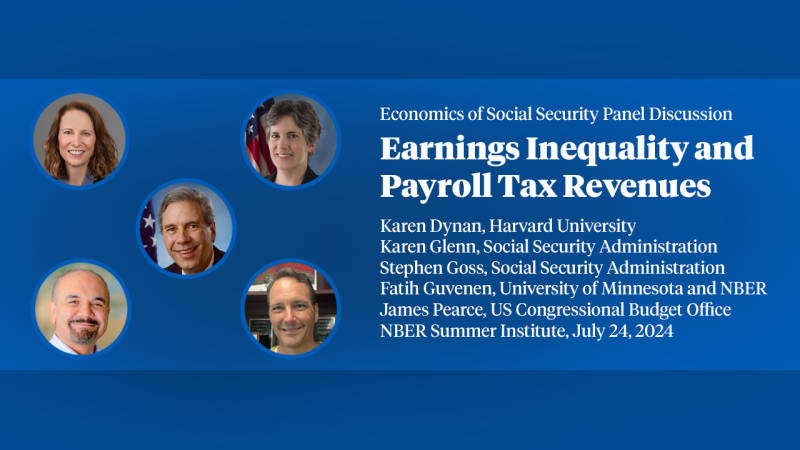Distance to College Contributes to Educational Disparities

Proximity to a community college impacts college enrollment and degree completion, particularly for minority and low-income students. Consequently, disparities in geographic access to higher education contribute to educational attainment gaps across demographic groups.
In Distance to Degrees: How College Proximity Shapes Students’ Enrollment Choices and Attainment Across Race-Ethnicity and Socioeconomic Status (NBER Working Paper 33337), Riley K. Acton, Kalena Cortes, Lois Miller, and Camila Morales analyze administrative data covering all Texas public high school graduates from 2013 to 2017. They focus on “community college deserts” — areas where students must travel for at least 30 minutes to reach the nearest public two-year college.
In Texas, disadvantaged students often forgo college entirely when far from a community college while more advantaged students substitute towards four-year colleges.
The researchers link student records with driving distances between Texas high schools and college campuses to examine relationships between distance to college and postsecondary outcomes. Their comprehensive dataset, which also includes information on student demographics, academic preparation, and high school characteristics, allows them to track enrollment patterns, credit accumulation, and degree completion for up to eight years after high school graduation.
The researchers find differences related to race, ethnicity, and socioeconomic status in how students respond to living in community college deserts. White and Asian students who live far from community colleges tend to substitute by enrolling in four-year universities instead. When these students attend a high school in a community college desert, they are 4.4 percentage points more likely to enroll in a public four-year college and at least 1.3 percentage points more likely to complete a bachelor’s degree compared to their peers who live within 30 minutes of a community college.
In contrast, Black and Hispanic students living in community college deserts are less likely to pursue any higher education: they exhibit 5.9 percentage point lower overall college enrollment rates and 1.1 percentage point lower bachelor’s degree completion rates. Similarly, economically disadvantaged students show a 5.4 percentage point reduction in college enrollment and a 2.6 percentage point drop in degree completion.
The effects persist over time and remain significant even after controlling for academic preparation. Living in a community college desert reduces overall degree completion by 16.9 percent for Black and Hispanic students and 15.7 percent for economically disadvantaged students, compared to their peers who do not live in community college deserts. Approximately half of this effect stems from reduced initial enrollment in college, while the remainder reflects lower persistence and completion rates among those who do enroll.
Institutional support was provided by Miami University, the University of South Carolina, the University of Texas at Dallas, Texas A&M University, and Stanford University.


